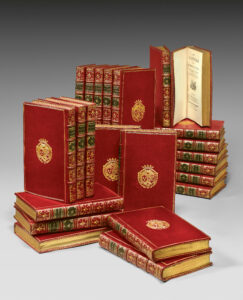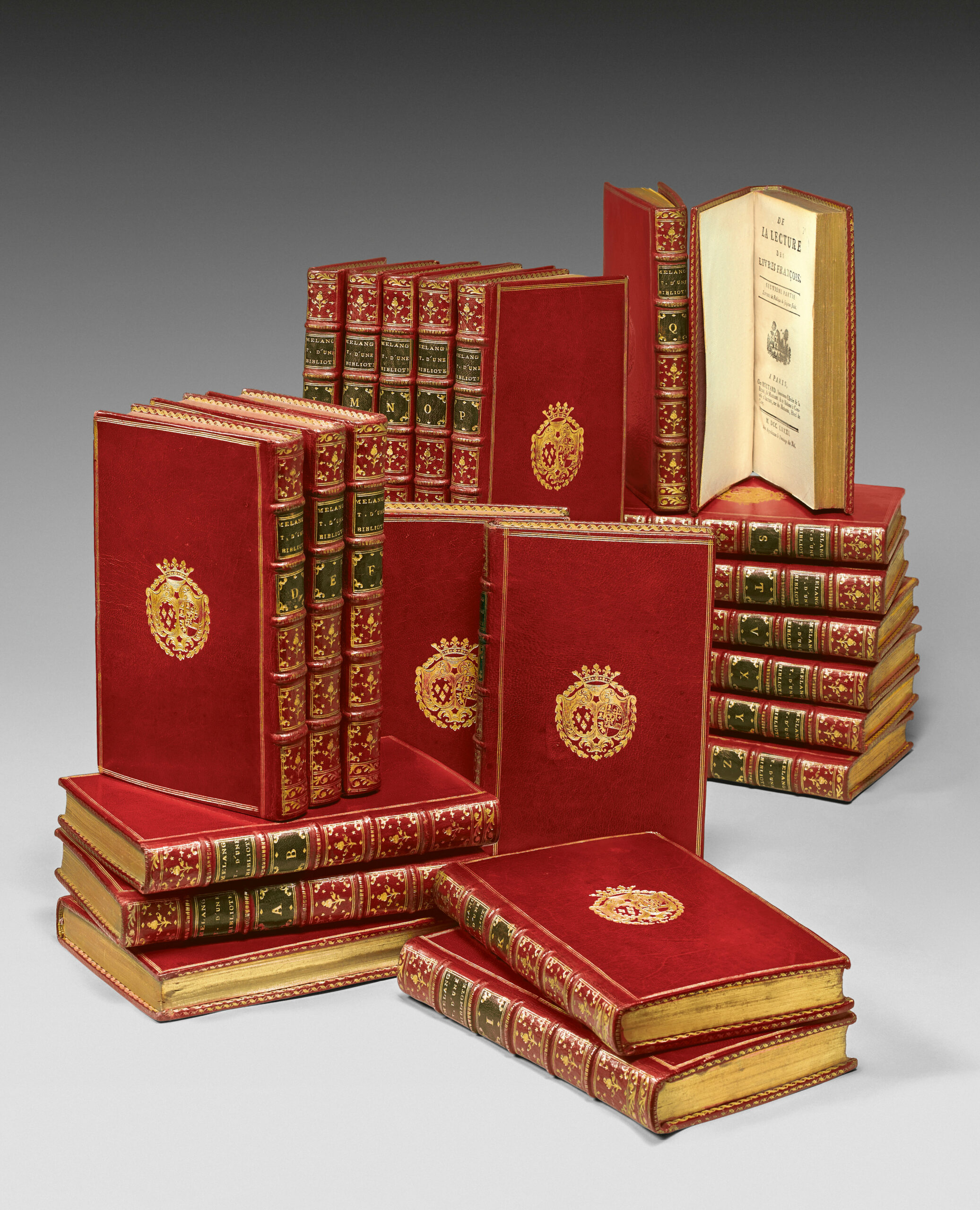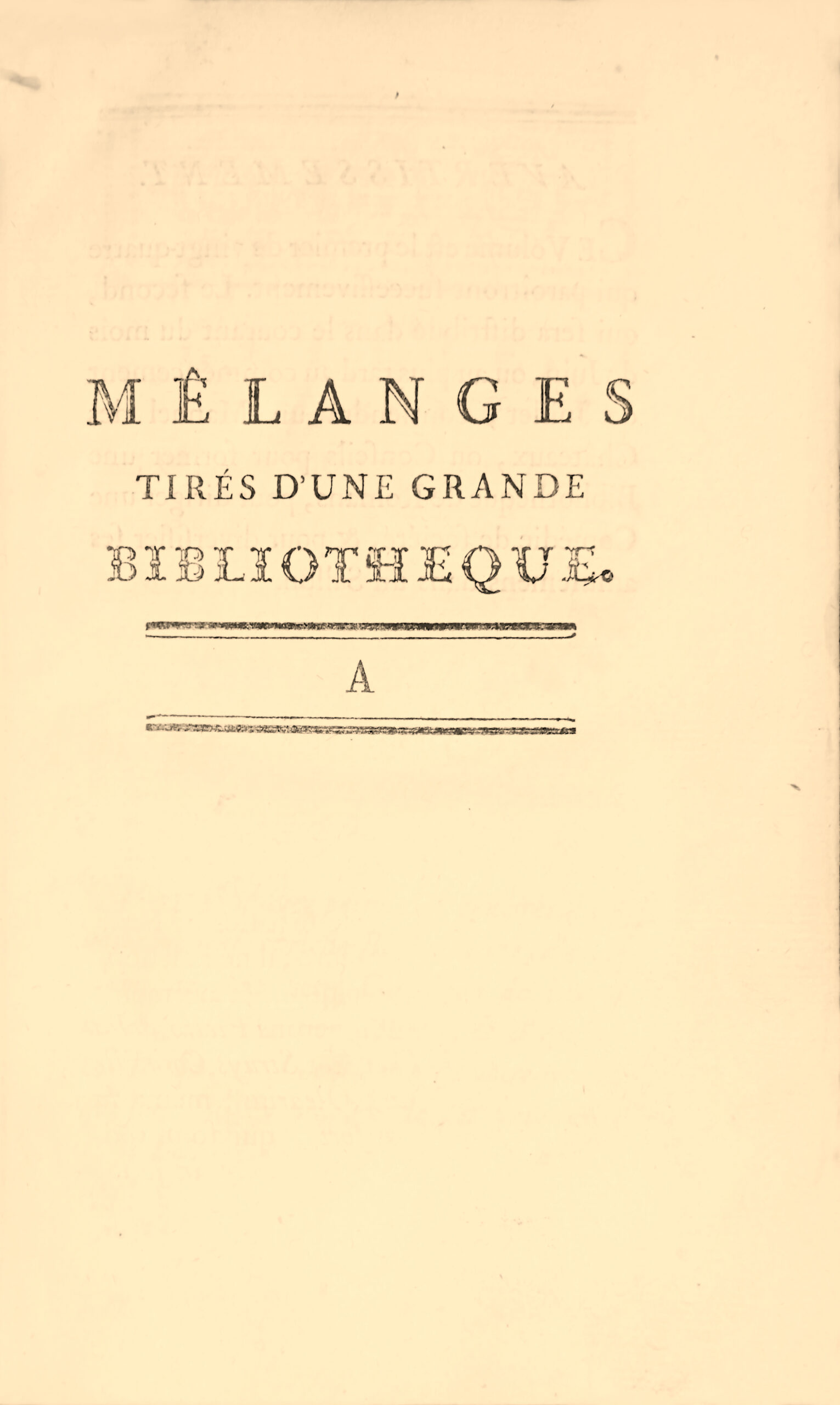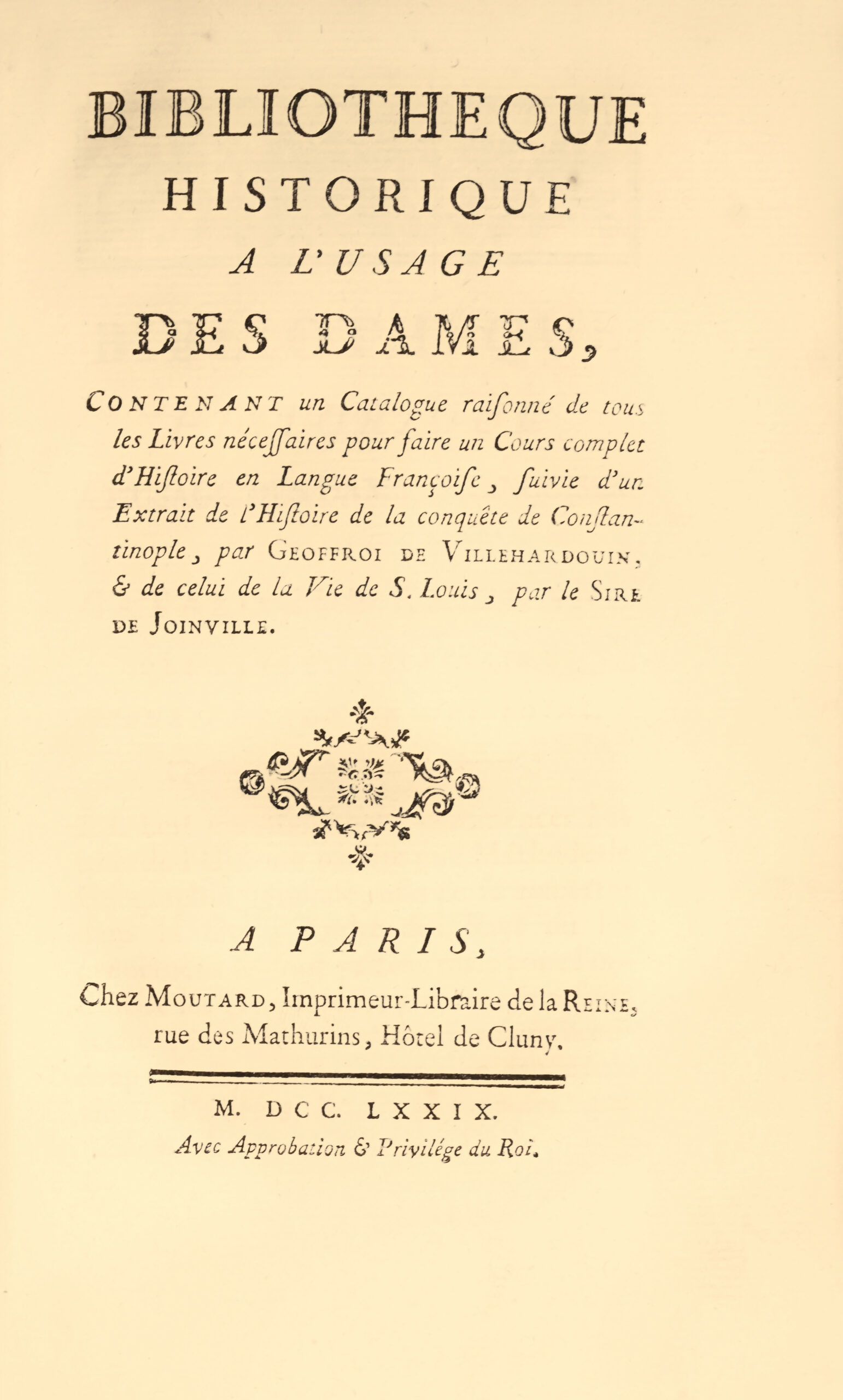Paris, chez Moutard, 1779-1781.
24 volumes 8vo, complete. Red morocco, triple gilt fillet around the covers, central coat of arms, richly decorated spines, green lettering pieces, gilt edges. Armorial contemporary binding.
193 x 130 mm.
[video width="1920" height="1080" mp4="https://www.camillesourget.com/wp-content2024LDM.mp4"][/video] First edition of one of the most captivating French literary and bibliophilic enterprises of the 18th century. The twenty-four volumes of Mélanges tirés d'une grande bibliothèque, published from 1779 to 1781, are the anonymous work of a nobleman, Antoine René de Voyer d'Argenson, Marquis de Paulmy (1722-1787), assisted by a professional editor, André-Guillaume Contant d'Orville. As a bibliophile and amateur writer, the Marquis de Paulmy had a very rich collection of books, in particular old manuscripts and rare editions of texts from the Middle Ages to the 16th century. His library now forms the ancient collection of the Bibliothèque de l'Arsenal. Originally, the Mélanges were intended to draw extracts from novels, especially êrly ones, from the trêsure trove of this collection in order to compete with the success of the Bibliothèque des Romans among “Dames” and “gens du monde”, which Paulmy had initiated but had to abandon after a falling-out with the Comte de Tressan. However, from the fourth volume onwards, a new title appêred, reflecting a quasi-encyclopedic ambition: “De La Lecture des livres français, considérée comme amusement”. This collection of extracts from novels and other types of texts, mainly from the 16th century, was edited by a bookseller following in the footsteps of Panckoucke and Moutard, also testifies to the taste of amateur writers and high society audiences for transposing ancient texts and inventing “little novels” on ancient canvases, some in the so-called “troubadour” style. This publication had a huge impact, contributing to the development of a taste for the middle ages and the troubadour style in France, a tradition to which romanticism owes a grêt dêl. These twenty-four volumes form the most important primitive core of this collection, as noted in the Foreword of the first volume. It was subsequently expanded and enlarged by forty-six volumes. The role played by the Marquis de Paulmy in the dissemination of medieval literature in the second half of the 18th century needs no further emphasis. What has been less recognized is the special attention he devoted to the literature of the so-called “late Middle Ages”, and in particular to the original novels and prose adaptations that the 15th century produced in large quantities, and to which the transition to print guaranteed a previously unknown diffusion. His interest lies not only with bibliophiles who collect fine manuscripts, incunabula and êrly editions, but also with rêders who, seeing the history of literature evolve, have not overlooked - far from it - the last century of the Middle Ages and the first decades of the 16th century. This magnificent volume bêrs the arms of Marie-Therese de Savoie, Comtesse d'Artois (1756-1805), wife of Charles-Philippe, Comte d'Artois, who became King of France under the name of Charles X. “Marie-Thérèse de Savoie, second daughter of Duke Victor-Amédée III, born on January 31, 1756, was married on November 16, 1773, in the chapel of Versailles, to Charles-Philippe, Comte d'Artois, who became King of France under the name of Charles X. Everyone at Marie-Antoinette's court praised her decency and gentleness. “She had, says Madame Campan, a very bêutiful complexion; kind and generous, she was loved by all those around her”. (E. Quentin-Bauchart). Her library, built up by her secretary Félix Nogaret, was one of the most important of the period, and her books were generally bound in red morocco. Copy quoted by E. Quentin-Bauchart, Les Femmes bibliophiles de France, (II, p. 348, no. 93). From the libraries of Ambroise Firmin-Didot (1884, no. 500) and Sacha Guitry (I, 1976, no. 1), as described in the Firmin Didot catalog: “A very interesting work, even today, containing an enormous quantity of analyses and extracts from books on science, literature and history, since the Middle Ages, all for the use of ladies. Copy covered with a very fresh binding, with the arms of the countess of Artois.” This work sold for 215 Fr. Or (n°500). In the same sale on June 14, 1884, the extremely rare first edition of “Christine de Pisan”, “le Chemin de long estude de Dame Christine de Pise”, Paris, 1549, bound by Simier, sold for 25 Fr. Or (n°323). Today, it sells for €75,000. Bêutiful binding, with green morocco lettering pieces bêring the volume numbers in elegantly printed alphabet letters.
See less information




